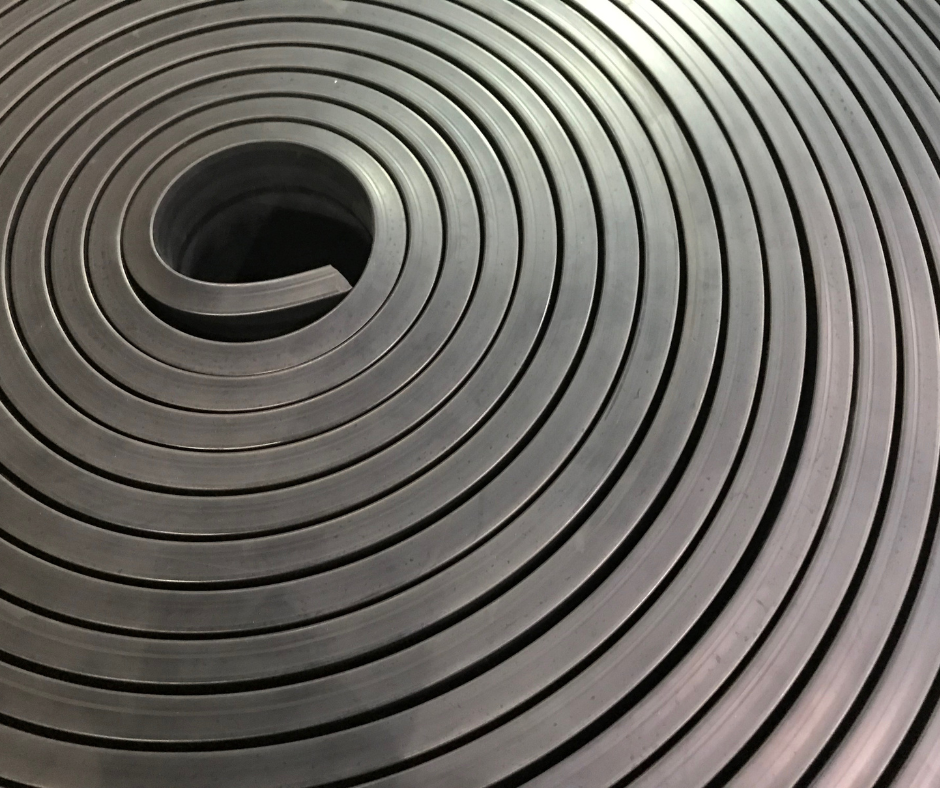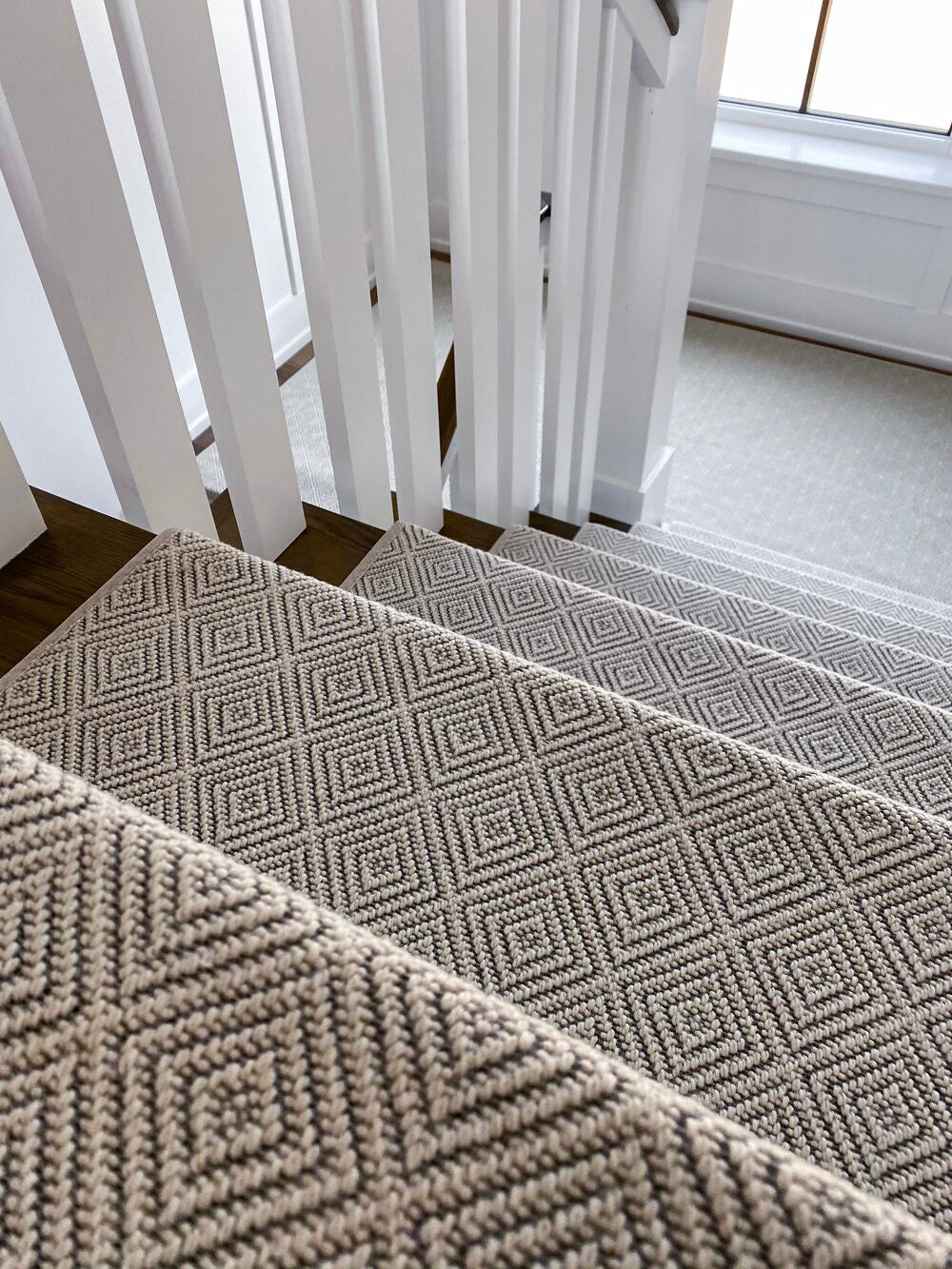A well-designed staircase is more than just a path between floors—it’s a statement of safety and style.
A stair tread side overhang is the portion of the tread that extends past the side edge of the staircase, creating a clean, finished appearance while helping to protect exposed wood.
Whether you’re building indoor stairs or upgrading outdoor steps, in this guide, we’ll cover everything from code considerations to materials and design ideas.
We’ll also explore how carpet stair treads pair with side overhangs to add warmth, grip, and polish to each step.
By the end, you’ll know exactly how to make your staircase safer, more durable, and visually complete.
What Is the Purpose of a Stair Tread Side Overhang?
Stair tread side overhangs serve a dual purpose: visual polish and structural support.
Visually, they conceal raw side edges on open stairs, making the entire staircase look more intentional and finished.
Instead of exposed cut lines or visible grain, a smooth side extension continues the tread profile for a clean, tailored appearance.
Functionally, side overhangs offer extra edge protection.
On staircases where one or both sides are visible—such as open-riser stairs or floating stairs—the overhang acts like a trim, shielding the sides from chips, wear, and moisture.
It’s a subtle feature that helps maintain long-term durability, especially in high-traffic areas.
For indoor applications, side overhangs are typically crafted from the same material as the tread—wood, laminate, or engineered composite—while outdoor builds may require more weather-resistant materials.
Aesthetic Benefits of Stair Tread Side Overhangs
One of the most common reasons people include a side overhang is for its aesthetic value.
It softens the look of sharp edges and adds visual weight, giving each step a more substantial presence.
This creates a cohesive feel throughout the staircase, especially when the side overhang matches the front nosing in width and depth.
From a design standpoint, the overhang draws the eye along a smooth, uninterrupted line from one step to the next.
When you're working with wide staircases or stairs that are visible from multiple angles, the visual flow becomes even more important.
A stair tread with both front and side overhangs makes the entire structure feel elevated and more custom-built.
Are Stair Tread Side Overhangs Required by Code?
Building codes typically focus on the front nosing of the tread, not the side.
According to the International Residential Code (IRC), the front nosing should project between ¾ inch to 1-1/4 inches beyond the riser to ensure safe, comfortable footing.
Side overhangs, on the other hand, are generally optional.
There is no universal requirement that mandates their inclusion or specific size.
That said, many designers and builders still choose to include them because they enhance the staircase’s appearance and help conceal the underlying framework.
Because there's no strict guideline, the dimensions of a stair tread side overhang can be adjusted to match the style of the staircase.
Whether you're building a rustic staircase for a mountain cabin or a sleek set of deck stairs with minimal edges, the overhang can be tailored to fit.
This flexibility is especially useful when working with a deck stair tread overhang, where outdoor conditions and building materials influence the design.
In these cases, a stair tread side overhang isn’t just about looks—it’s also about weather protection and material integrity.
How Much Should a Stair Tread Side Overhang Extend?
While the front overhang is regulated by code, the maximum overhang on stair tread—specifically the side overhang—is usually dictated by design preferences and practical installation limits.
Most side overhangs range between ½ inch to 1 inch.
Going beyond that may create a lip that feels bulky or awkward, especially on narrower steps.
Keeping the side overhang within the same range as the front nosing is a good rule of thumb.
This creates balance and avoids tripping hazards, especially if you plan to install carpet stair treads or rugs later.
It's also important to consider the type of tread you're using.
Engineered or pre-finished treads may come with a built-in overhang, while natural hardwood treads might need trim pieces to complete the look.
How to Add or Modify a Stair Tread Side Overhang
There are two primary methods for installing or modifying a side overhang on a stair tread:
-
Pre-Finished Treads These come with extended edges that already include both the front and side overhangs. They're ideal for new builds or complete staircase renovations where uniformity is key. These treads often include mitered edges or returns for a seamless look.
-
Trim Installation In retrofit or custom situations, a trim piece or return can be attached along the side of an existing tread. This method allows flexibility and is especially useful when working with existing stairs that need a facelift. Trim can be matched to the tread’s wood grain or painted for contrast.
In both approaches, precision matters.
The return must be cut to match the angle of the stair and fit flush with the main tread.
Sanding and finishing help blend the pieces together, ensuring a professional appearance.
Considerations for Outdoor Installations
When designing outdoor stairs, the choice of material becomes critical.
A deck stair tread overhang needs to resist moisture, UV rays, and temperature shifts.
Materials like pressure-treated wood, composite decking, or PVC-based treads are ideal.
These products are engineered to expand and contract with changing conditions while maintaining their shape and strength.
In addition to material, drainage and slope must be factored into the design.
The overhang should not create water traps or areas where moisture can accumulate.
A slight downward pitch can help shed rain and prevent deterioration over time.
If the stair stringers are exposed, extending the tread overhang on the sides also protects those structural elements from the elements.
A durable side overhang becomes an important detail that adds years to your staircase's lifespan.
Pairing Side Overhangs with Carpet Stair Treads
Once your stairs are finished with a front and side overhang, the next step is to consider how carpet treads can enhance both style and safety.
Carpet stair treads add warmth, reduce noise, and improve traction—especially for families with pets or young children.
When installed correctly, the edges of the carpet align with the overhangs to create a perfectly tailored look.
The peel-and-stick backing used in many premium stair treads eliminates the need for staples or nails.
And with sewn-in padding underneath, you get added cushion and grip on every step.
These upgrades not only elevate your home’s interior but also help protect the wood beneath from daily wear.
Why Side Overhangs Matter in Stair Design
Many homeowners overlook the importance of the stair tread side overhang until it’s time to upgrade or build a staircase from scratch.
But skipping this detail can leave stairs looking incomplete or even uneven, especially on open designs where the sides are visible.
In luxury homes, side overhangs are a standard design choice because they help create a cleaner, more cohesive look.
The slight shadow they cast adds visual interest and highlights the craftsmanship of the stair itself.
It’s a small feature that makes a big difference.
Whether you’re using hardwood, engineered wood, or composite material, taking time to plan your overhang will improve not just how your stairs look, but how they hold up over time.
Design Ideas for Stair Tread Side Overhangs
When considering your own staircase design, here are a few creative ways to use side overhangs:
-
Modern Minimalist: Keep overhangs thin and flush for a streamlined appearance. Pair with light-toned treads and hidden risers for a clean, contemporary look.
-
Traditional: Use rounded side overhangs with full front nosing for a classic feel. This style works especially well with darker wood tones and detailed balusters.
-
Rustic or Farmhouse: Extend the overhang slightly more and add visible grain or rough edges for character. Pair with natural or distressed materials for warmth.
-
Outdoor Deck: Combine durable composite treads with side overhangs that help shield the stringers from rain and sun. This gives the entire staircase a polished look that stands up to the elements.
Steps to Success
Incorporating a stair tread side overhang into your staircase is one of the easiest ways to boost both form and function.
From open risers indoors to wide-set stairs on your deck, these details help you create a staircase that feels sturdy, balanced, and custom-built.
And while building codes may not require a side overhang, taking the extra step to include one can make all the difference in how your staircase looks and performs.
With careful planning, the right materials, and a sharp eye for detail, your stair tread side overhang can transform ordinary stairs into a standout architectural feature.
Ready to Upgrade Your Stairs?
Contact Oak Valley Designs today to get started with high-quality stair solutions that combine style, safety, and long-lasting performance.
-
Website: https://oakvalleydesigns.com/
-
Phone: 706.331.0315
-
Email: info@oakvalleydesigns.com
-
Address: 30 River Ct SW Bldg E Cartersville, Ga 30120



